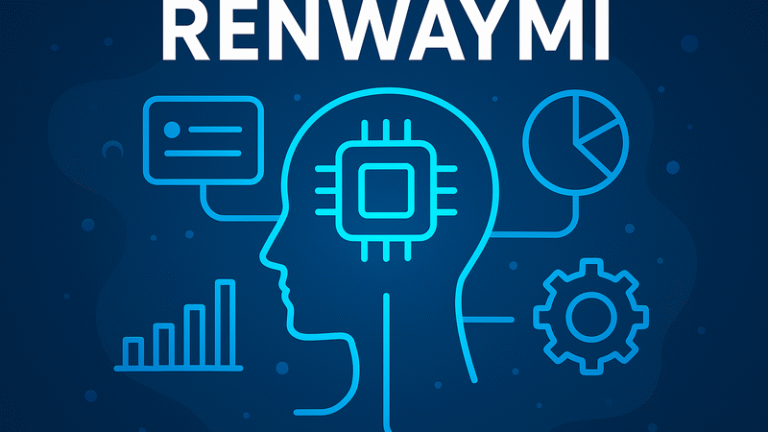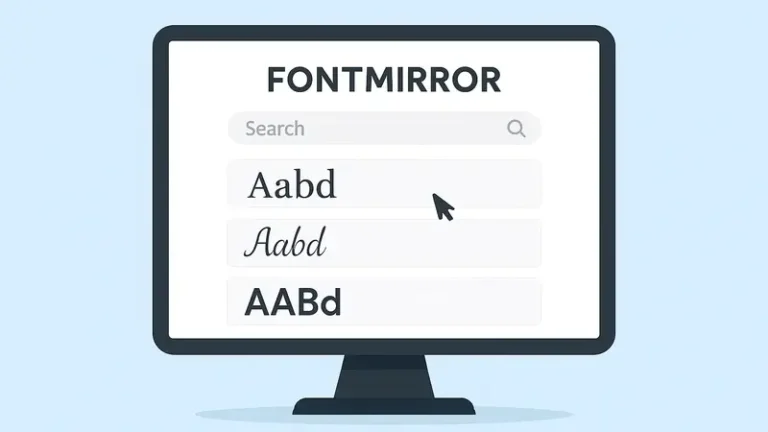
If you’ve heard the term renwaymi and wondered what it means or how to use it effectively, you’re in the right place. In this guide, we’ll unpack the idea behind renwaymi in plain language, show where it fits in today’s digital workflows, and give you a practical, step-by-step plan to get results—without fluff or filler.
What Is Renwaymi?
At its core, renwaymi can be understood as a method and toolkit for turning ideas into outcomes with unusual speed and clarity. Think of it as a structured way to move from “concept” to “shippable result” using lightweight frameworks, repeatable steps, and measurable checkpoints. Whether you’re a solo creator, a marketer on deadlines, or a product team balancing time and quality, renwaymi gives you a path to reduce guesswork and increase output.
Why Renwaymi Matters Right Now
Three pressures define modern work: limited time, rising expectations, and noisy markets. Renwaymi addresses all three by focusing on clarity (what matters most), cadence (how to deliver regularly), and consistency (how to maintain quality as you scale). In an environment where trends shift weekly and audiences abandon slow, unfocused outputs, renwaymi offers a way to stay fast without being sloppy.
The Renwaymi Framework: 7 Pillars
These pillars make the approach concrete, so you can apply it to content, campaigns, products, or internal processes.
Definition — Translate vague ideas into one crisp problem statement, a success metric, and a due date.
Scoping — Limit the first version to the smallest slice that proves value.
Research — Collect only what you need to make decisions, not everything that exists.
Drafting — Create a first version quickly and visibly; don’t polish in the dark.
Feedback — Seek targeted feedback from the smallest set of qualified reviewers.
Iteration — Fix the few things that move the needle; avoid rabbit holes.
Shipping — Publish, measure, and capture learnings for next time.
What Renwaymi Is Not
It’s not a single app or a locked-in platform.
It’s not “move fast and break things.” It’s “move fast and learn things.”
It’s not a fad word for common sense; renwaymi gives you repeatable structures so your results aren’t left to luck.
Use Cases You Can Steal Today
Content & SEO: Plan, draft, and publish on a predictable schedule without sacrificing depth.
Marketing Campaigns: Launch in small, testable increments; scale only what converts.
Product & UX: Validate the smallest valuable feature with real users before expanding.
Operations: Turn messy workflows into checklists that anyone can follow.
Personal Projects: Write a newsletter, build a portfolio, or ship a mini-app in weeks, not months.
The Renwaymi 10-Step Playbook (Copy/Paste)
Follow these steps end-to-end the first time; later you can compress or expand as needed.
(1) Name the outcome. Write one sentence: “Success = X by Y date measured by Z.”
(2) Pick the audience. Who exactly benefits first? Rank them if there are multiple.
(3) Choose the smallest slice. What’s the version you can deliver in days, not weeks?
(4) Collect only decisive data. Two or three sources that affect decisions—no more.
(5) Draft in public. Create a shareable doc or prototype within 48 hours.
(6) Request focused feedback. Ask 2–4 people, each with one clear question to answer.
(7) Prioritize fixes. Choose the top three changes that move your metric.
(8) Polish just enough. Tighten clarity, remove blockers, avoid gold-plating.
(9) Ship and measure. Publish to a real channel; track a real number.
(10) Archive learnings. Note what worked, what didn’t, and what to repeat.
Tooling That Fits the Mindset
You can implement renwaymi with virtually any stack. The point isn’t the tool—it’s the rhythm. That said, look for tools that provide:
Low friction: quick to start, minimal setup
Visibility: easy sharing and feedback
Metrics: built-in analytics or simple integration
Reusability: templates, snippets, or automations
Quality Control the Renwaymi Way
A common fear is that going faster lowers quality. Renwaymi counters that with lightweight guardrails:
Definition check: Does the draft still match the one-line success statement?
Audience check: Is the primary audience crystal clear in tone, imagery, and calls to action?
Signal check: Are you measuring the right thing (e.g., sign-ups, replies, demos booked)?
Scope check: Did the scope creep? If yes, cut back to the smallest useful version.
Advanced Tricks Once You’ve Shipped a Few Times
Cadence Calendar: Assign a fixed day for each stage (e.g., Monday scoping, Tuesday drafting, Wednesday feedback, Thursday iteration, Friday ship).
Template Library: Save what works as templates: briefs, outlines, checklists, and review forms.
Metrics Ladder: Define a three-rung ladder (e.g., Baseline → Target → Wow). Promote ideas only when they hit Target two weeks in a row.
Retrospectives: 15 minutes, three questions: What helped? What slowed us? What will we change next time?
Common Mistakes (And How to Avoid Them)
(1) Over-researching: Limit research time; freeze inputs after a set window.
(2) Endless polishing: Define a “good enough” checklist and ship when it’s met.
(3) Reviewer bloat: Keep reviewers few and relevant; rotating experts beat large committees.
(4) No single metric: Choose one primary metric per project; secondary metrics are secondary for a reason.
(5) Scope drift: If an idea is great but out of scope, park it in a backlog—don’t stall shipping.
Frequently Asked Questions
Q1: Is renwaymi only for creators or marketers?
No. The approach is cross-functional. Software teams use it to pilot features; operations teams use it to standardize processes; educators use it to design and iterate curricula quickly.
Q2: Can I do renwaymi solo?
Absolutely. The pillars work even if you’re one person. You’ll just need to simulate feedback—try user surveys, small pilots, or a trusted peer.
Q3: How fast should I ship?
As fast as you can maintain quality. Start with weekly or biweekly cycles; adjust after you’ve built a rhythm.
Q4: What if my industry is regulated?
Keep the cadence, but add a compliance checkpoint. Renwaymi is about clarity and iteration—not skipping governance.
Q5: How do I keep motivation high?
Celebrate “done,” not “perfect.” Track cumulative outputs, publish small wins, and schedule short retros to stay energized.
A Practical 30-Day Plan You Can Start Today
Week 1 — Foundation
Write your one-line success statement.Choose your audience and smallest slice.Draft a first version within 48 hours and request focused feedback.
Week 2 — Iterate & Ship
Apply top three fixes.
Ship to a real channel.
Measure one metric for five days.
Week 3 — Scale What Works
If the metric rises, amplify distribution (partners, newsletters, repurposing).
Save your process as a template; document settings, scripts, or designs.
Week 4 — Review & Repeat
Run a 15-minute retro.
Decide to continue, pivot, or sunset.
Start the next cycle with a refined scope.
Why Teams Stick With This Approach
Predictability: Stakeholders know what’s coming and when.
Focus: Work aligns to one metric that matters.
Momentum: Shipping creates learning loops you can’t get from speculation.
Compounding gains: Templates and checklists make each cycle easier than the last.
Final Thoughts
Done right, renwaymi isn’t just another productivity buzzword—it’s a compact operating system for creative, marketing, product, and operations work. It rewards clarity, favors action, and treats learning as the shortest route to quality. If you commit to small scopes, visible drafts, and tight feedback, you’ll ship more, learn faster, and waste less energy debating what “good” looks like. Start with one project this week. Ship the smallest version. Measure one thing. Then repeat.
For more update please visit my website: letflix



